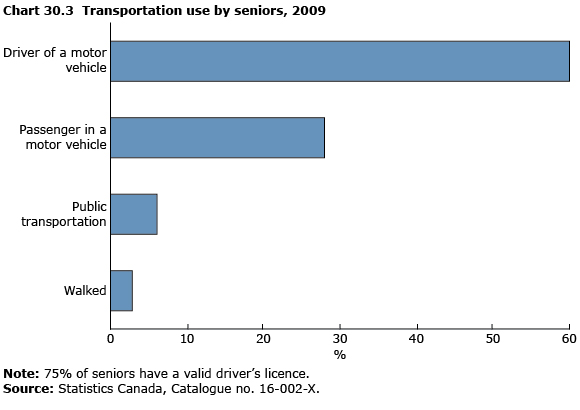Seniors' use of transportation
Archived Content
Information identified as archived is provided for reference, research or recordkeeping purposes. It is not subject to the Government of Canada Web Standards and has not been altered or updated since it was archived. Please "contact us" to request a format other than those available.
Related information
In 2009, 60% of seniors reported driving a motor vehicle as their most common form of transportation. Being a passenger in a motor vehicle was the next most common form of transportation, reported by 28% of seniors. About 6% of seniors used public transportation and 3% of seniors walked.
Nine in ten (90%) seniors with a valid drivers' licence drove at least once a week during the month preceding the survey.
Senior men were more likely to drive (79%) than senior women (44%). Other factors associated with the likelihood of driving included being married and having excellent or very good health. In 2009, nearly two-thirds (65%) of married seniors drove, compared with less than half (47%) of widowed seniors.
Seniors with three or more chronic conditions were less likely to drive and more likely to be passengers than seniors with no chronic conditions. In 2009, 54% of seniors with three or more chronic conditions drove, compared with 67% of seniors with no chronic conditions.
- Date modified:

